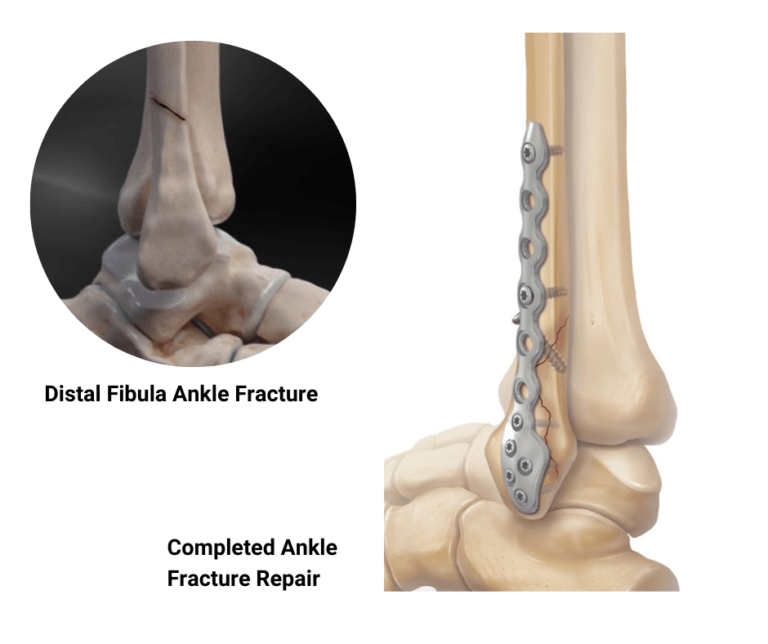What is it?
The ankle joint consists of three bones: the fibula, the tibia, and the talus. Fractures of the ankle generally occur when the ankle is twisted violently during walking or running. They can also occur from trauma, such as a fall from height or an automobile injury. Depending on the mechanism of injury, one or more bones can be broken.
WHAT ARE SIGNS AND SYMPTOMS OF AN ankle fractures?
Common symptoms of ankle fractures include:
• Pain and swelling of the ankle
• Inability to bear weight
• Deformity of the ankle (if the ankle is dislocated)
Diagnosis
In the office, a complete history and physical exam is obtained. The ankle is examined for any swelling, deformity, and tenderness to palpation. X-rays of the ankle are necessary to make an accurate diagnosis.
Treatment
Conservative treatment of ankle fractures can be performed in minimally displaced fractures, where the bone alignment is near normal, or anatomic. Such treatment includes fracture boot immobilization, ice, and physical therapy. Follow-up X-rays are necessary to ensure the fracture is healing in a good position.
Surgical treatment of ankle fractures is recommended when the bones are significantly displaced. Ankle fracture repair aims to realign the broken ends and hold them in place with anatomic contoured plates and screws. If there is a concurrent syndesmosis injury (high ankle sprain), this can also be repaired at the same time.
Ankle fracture surgery is typically done in an outpatient setting under regional anesthesia, allowing patients to return home the same day. In conjunction with supervised physical therapy, ankle fracture repair has been shown to successfully heal the broken ankle and allow patients to return to their sport or activity.

RECOVERY
Following surgery, patients are expected to be non-weight bearing for six weeks. Physical therapy begins around two weeks after surgery with emphasis on early ankle range of motion. Weight bearing is initiated at six weeks, followed by a jogging program at 4-5 months. Return to activity is allowed at 5-6 months postoperatively.
ANKLE FRACTURE REPAIR (OPEN REDUCTION INTERNAL FIXATION)
The following animation demonstrates an all-inside arthroscopic reconThe following animation demonstrates a typical repair of a distal fibula ankle fracture. Once the fibula is realigned, an anatomically contoured plate is placed over the bone and held in place with clamps. The plate is then secured onto the fibula with screws above and below the fracture. If there is a concurrent unstable high ankle sprain (syndesmosis injury), this can also be repaired with a rope device that is secured to the plate.struction of the ACL with either a hamstring or quadriceps tendon graft. Following graft harvest and preparation, small sockets are created in both the femur and tibia. The graft is then introduced into the femoral socket and then into the tibial socket. Graft fixation is performed by tensioning and tying the sutures over a button.
